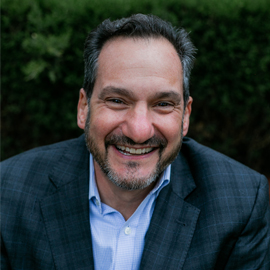
Matt Wasserman
I recently wrote about five steps in building a culture of philanthropy and breaking down silos and creating bridges for your colleagues to cross into the realm of philanthropy and embrace fundraising best practices. Here are the five as a refresher.
This article takes a deeper dive into the third step — explain the process of donor engagement, which is a matter of showing that it takes time, finesse, and a lot of work. It’s demonstrating both the art and process of engaging with donors in building a culture of philanthropy. There are five main components that you should review with your colleagues, including:
- It is relationship-based
- How everyone is different
- The various types of gifts
- Affinity to the organization
- The amount of time it takes to move through the fundraising cycle
1. It’s relationship-based: first and foremost, building relationships is fundamental in fundraising, and it’s the cornerstone of all activity and efforts. How can you demonstrate this to your non-fundraising colleagues? My spouse would tell me it’s about communication, listening, and understanding…hmmm…enough said. The key here is to understand why the donor has given or is considering investing in your organization, and what specifically (program, service, experience) resonated with him/her. It’s also about keeping the communication going with someone you don’t often see, engaging in various activities and touch points such as personal meeting or tours, letters, emails, and events. Make sure it’s two-way communication. Oh yeah, and did I mention listening.
2. Everyone is different: a critical element of the process in understanding donors is that as people we are all different. We are all human, and that can get lost when it’s time to fundraise, when it’s time to sit down with someone and ask them to invest in your organization. So, how do you bring this across to the people in your organization who don’t fundraise and might look at all these individuals as one-dimensional “targets”? How do you get the folks in your organization to realize something they probably know but are thrown off by the looming prospect of fundraising?
One method is to think about personality traits, age, and other psychographic traits of the person. You can ask them to take personality profile tests such as DISC, Myers-Briggs, or Colors, and connect with their colleagues. These personality assessments can create a great understanding and tools when transferred to regular donor engagement. Additionally, you should discuss how various personality traits will react to a meeting and being asked. There are many tools and takeaways from these surveys that detail interaction with different personalities.
3. The various types of gifts: It’s also important for your non-fundraising colleagues to understand that there are different types of gifts. You know them as planned, annual, major, corporate, and foundation. Maybe your non-fundraising peers could use a refresher. They might not be able to explain the difference between a planned gift and an annual appeal or realize the many engagement processes or strategies for securing various gifts. It will be important to explain the difference between donors who respond to mailings and give annually, and the in-person interaction required with major gift donors who spend time considering gifts.
4. Affinity to the organization: along with the types of gifts, are the levels of commitment donors have to your organization. This varies from the donor who has a limited understanding of your organization and participates through an event or annual volunteer effort, testing the organization to see if it’s a place they believe in and wish to have their life. As opposed to the donor who is completely committed to your organization, volunteering regularly, giving annually, and feels a sense of ownership and self-fulfillment from being involved. It’s important to explain this to avoid chasing dollars with donors with low affinity and developing unrealistic expectations. Through comparing various donors anonymously, or using a composite set of donors, you can demonstrate levels of affinity or connection to the organization, and which donors should be a priority focus because of their high affinity, and which donors have limited or no interest, and therefore should not be a priority regardless of their wealth.
5. Setting expectations of timing: is among the very critical items of donor engagement that should be defined. While we would like for donors to give immediately and right when we ask, that’s rarely the case. Your colleagues might not know that making a major gift is a major decision, and that decision-making process takes time. This could include everything from seeking input and advice from family members and gaining guidance from legal and financial advisors, to considering the effectiveness and impact of your organization. Additionally, let them know that it takes time to engage donors in your organization to a point where they are bought-in to your mission, vision, ability to execute, and be good stewards of their investment.
There’s a lot of competing attention for donors’ time and engagement, and it will take several touch points to bring someone to the point where a level of trust and commitment are built to make a substantial gift. Your colleagues who don’t fundraise are usually only aware of donors who give through methods such as events, mail, and other forms of direct solicitation. Additionally, they read about mega-gifts in the press that make it sound like decisions are made on the spot. Clearly outline a time frame of engagement and solicitation of major gift donors, including multiple touch points over an extended timeframe.
Teaching your colleagues the best practices of engaging donors can be a lot to go through. However, it’s important in gaining an understanding of the process. Building a culture of philanthropy will help set expectations and provide a roadmap for how they can help in developing stronger donor relationships at your organization.
These are just some of the methods in which you can talk about engaging donors, and I invite you to comment on other ideas and experiences that you feel would be effective.
In building a culture of philanthropy, it’s important for your colleagues to understand the art and science of donor engagement. Once they understand this, they are better prepared to start building stronger relationships with donors to your organization.
If you would like to learn more about engaging your staff in the fundraising process, please get in touch with me at matt@makephilanthropywork.com.



